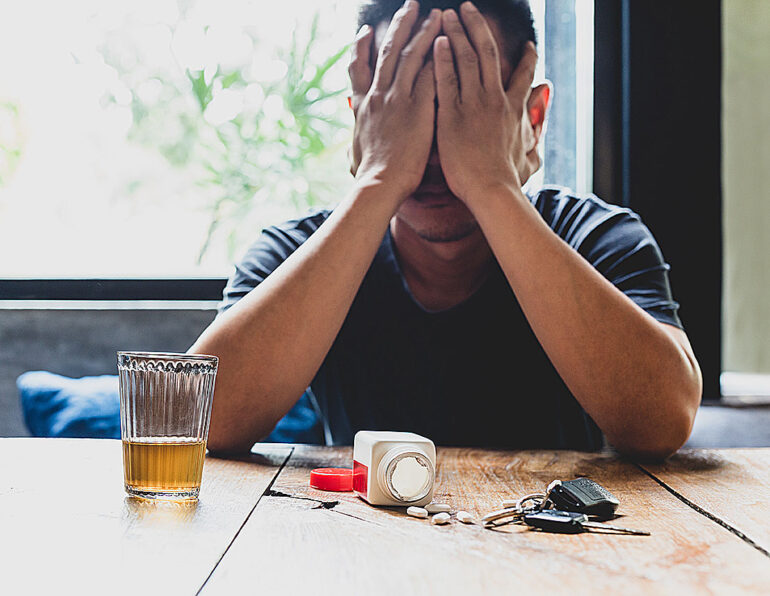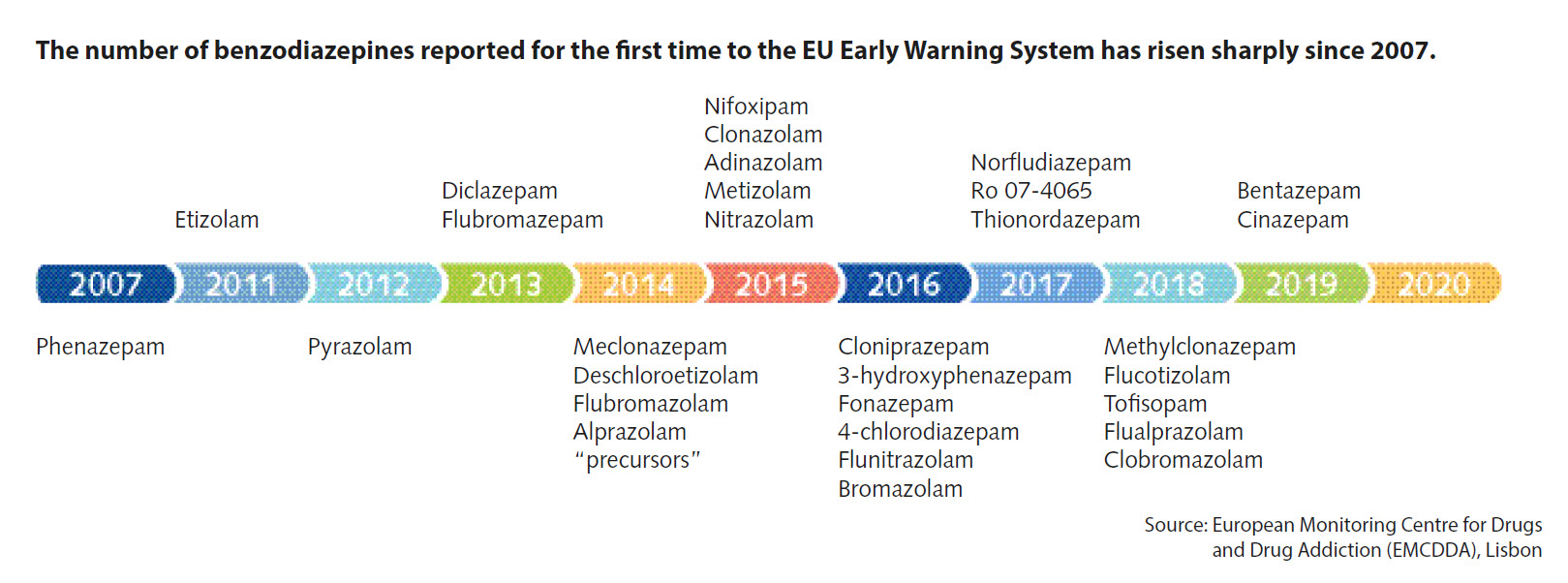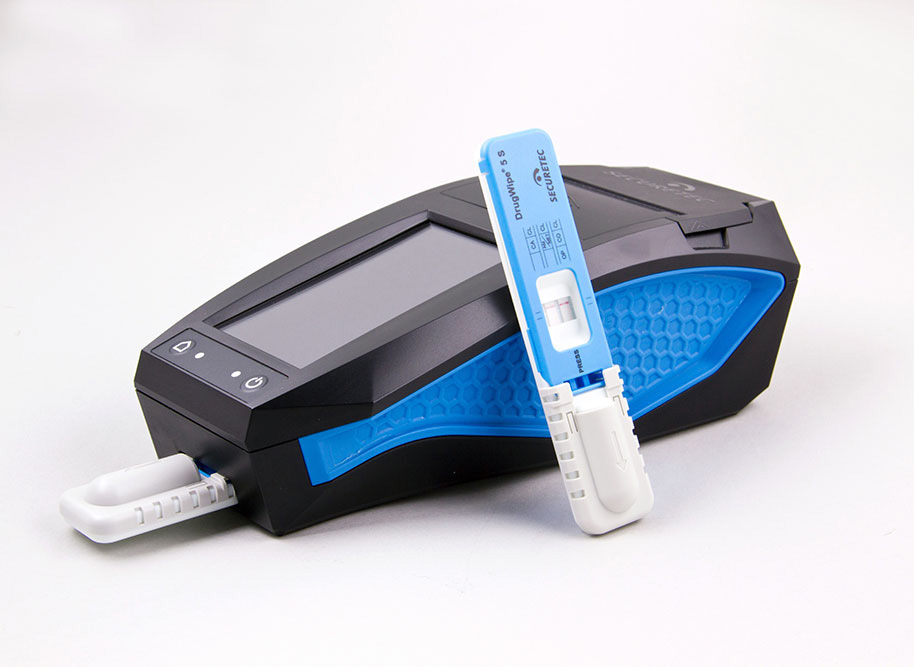
Drug testing of drivers involved in accidents –
first and second places go to THC and benzodiazepines
Consuming benzodiazepines (BZO) before driving causes a five-fold1 increase in the risk of being injured in a road traffic accident. If alcohol is consumed at the same time, an accident-related injury is 112 times more likely to occur. Benzos, like cannabis and opiates, belong to a group of drugs known as sedatives. While their effects are often less obvious than those of stimulants, they are no less dangerous.
After taking sedatives, people experience relaxation, often accompanied by euphoria and light-headedness, as well as a sense of time passing very slowly, with delayed reactions and movements. Users feel as though they’re “wrapped in cotton wool”. This skews their perception of the environment and the surrounding traffic – so that they may fail to spot red lights or pedestrians, miscalculate their speed and forget breaking distances or the sequences in which to perform actions. Users take greater risks because their relaxed state of mind gives them a false sense of safety. It makes no difference whether the substance is taken as prescription medication or illegally to make daily life easier. Many people don’t even consider the question of whether they are capable of driving. Or, they fall prey to the high risk of addiction associated with these drugs and simply don’t care about the risks to themselves or others around them.

The number of people driving under the influence of sedatives is on the rise. To date, cannabis remains the most frequent narcotic detected in roadside screening.
However, it is now closely followed by legal and illegal benzodiazepines. The European Monitoring Centre for Drugs and Drug Addiction (EMCDDA) is registering increased availability and growing consumption of both sedatives and opiates/opioids. To supply the illegal market, some of these substances are diverted from medical applications, while others come in the form of synthetic substances known as designer drugs. In some European countries and in the USA, the increase in road deaths due to sedatives has been proven.
Most drug users don’t think they will be caught when driving or attending their place of work under the influence. In addition, up to 80 percent of people who have consumed sedatives underestimate the high risks associated with these in everyday life. Consistent screening is a sustainable way of making road traffic and workplaces safer and creating awareness of the risks.

The DrugWipe® 6 S saliva tests enable fast and reliable detection of sedatives,
such as benzodiazepines – we’re always happy to help.
References:
1Bund gegen Alkohol und Drogen im Straßenverkehr (Alliance Against Alcohol and Drugs on the Roads), www.bads.de, Hamburg
2European Drug Report 2022 and New Benzodiazepines in Europe, 2021, European Monitoring Centre for Drugs and Drug (EMCDDA), Lisbon –
Deutsche Hauptstelle für Suchtfragen e.V. (German Centre for Addiction Issues), Hamm, www.dhs.de – Bundesanstalt für Straßenwesen
(German Federal Highway Research Institute), www.bast.de, Bergisch Gladbach



